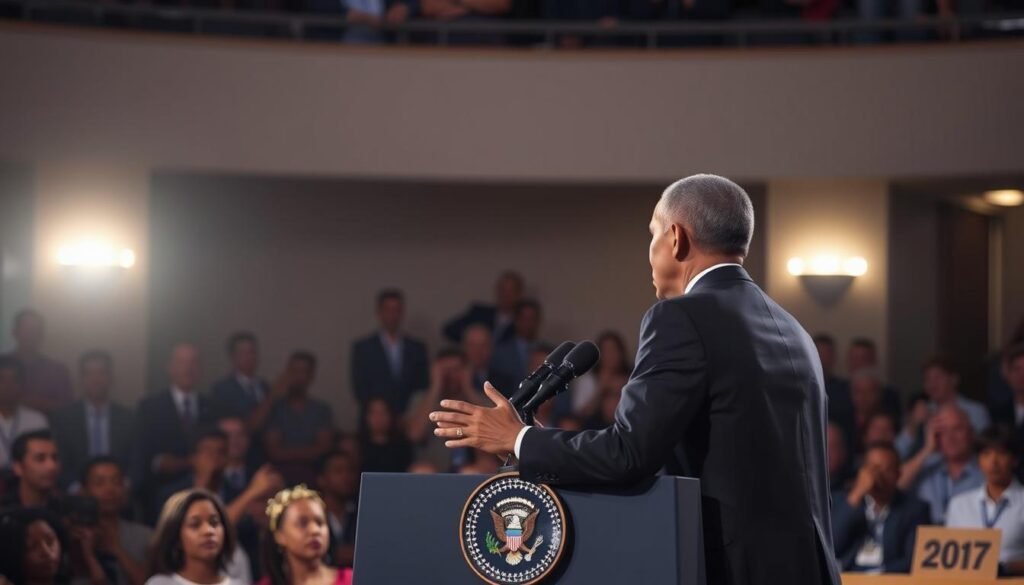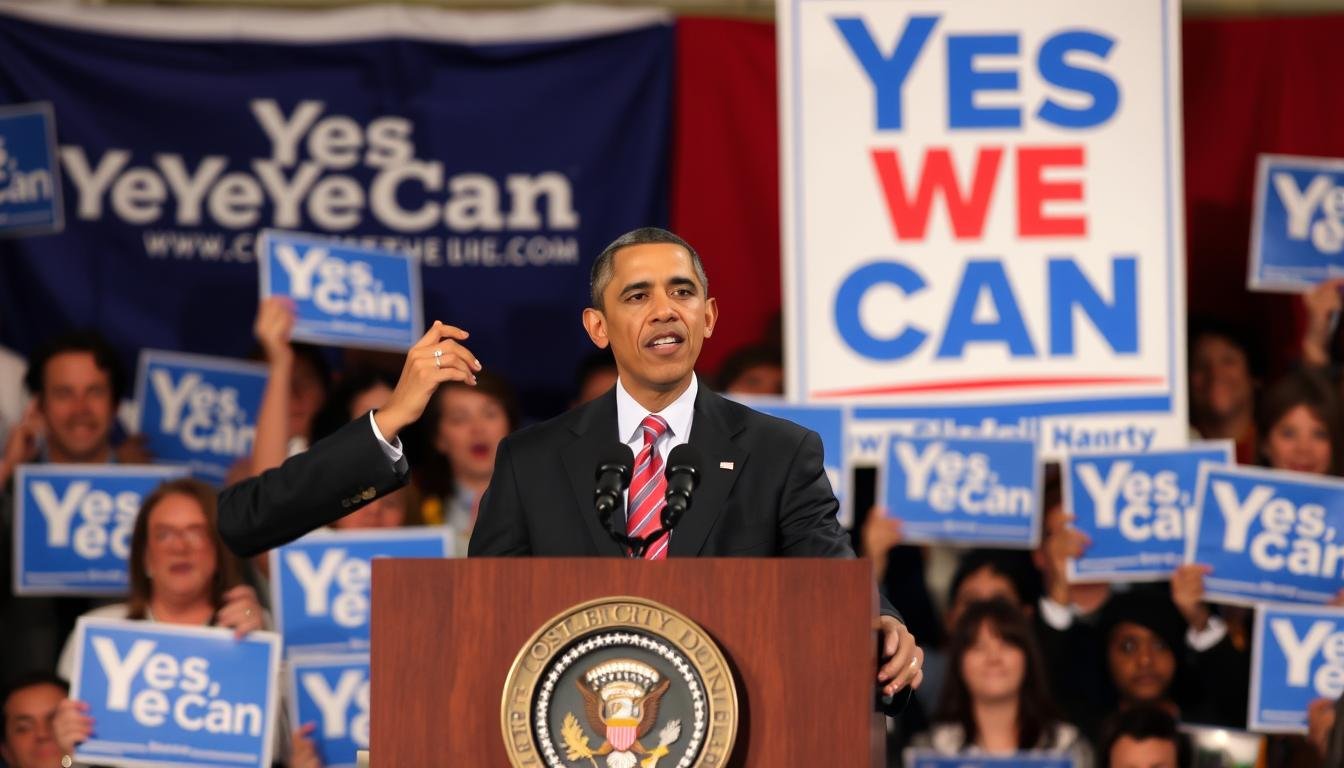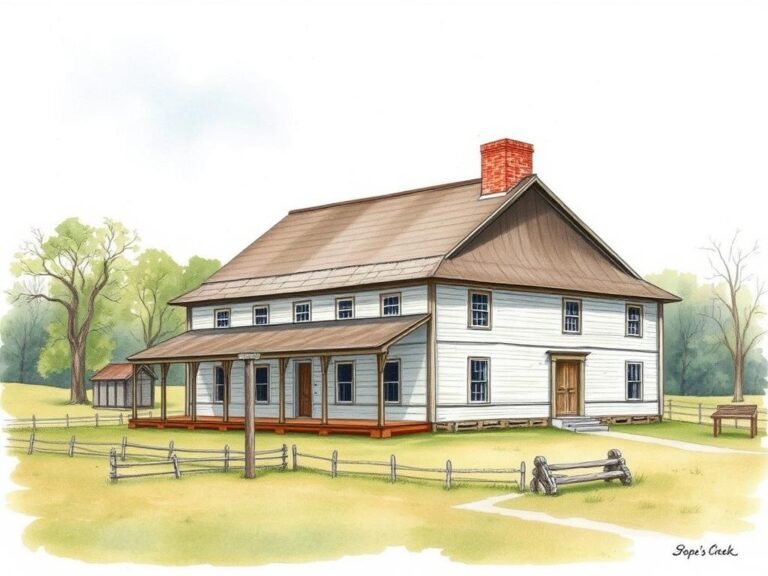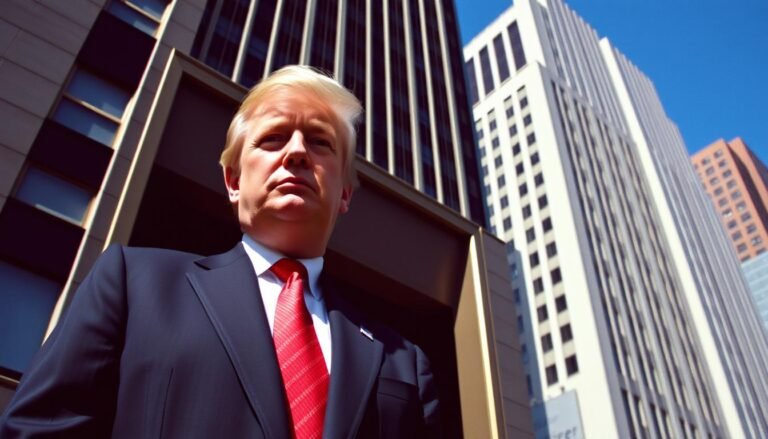Barack Obama’s ‘Yes We Can’: The Legacy of a Historic Slogan
Born during his 2008 presidential campaign, these three simple words transcended politics to become a cultural touchstone.
The slogan captured the optimism of a generation, galvanized a diverse coalition of voters, and ultimately helped propel Obama to the White House as America’s first Black president.
More than just campaign rhetoric, “Yes We Can” embodied a moment of national possibility and continues to echo through political discourse today.
The Origin Story: From Farm Workers to Campaign Trail
While many associate “Yes We Can” exclusively with Obama, the slogan’s roots run deeper in American activism. The phrase originated as “Sí Se Puede” (“Yes, It Can Be Done”) from the United Farm Workers movement led by César Chávez and Dolores Huerta in the 1970s. During a 24-day fast in Phoenix, Arizona, this rallying cry emerged as a message of determination against seemingly impossible odds.
Obama first prominently deployed “Yes We Can” after the 2008 New Hampshire primary. Though he had lost to Hillary Clinton, his concession speech transformed a campaign setback into a defining moment. As he told supporters that night:
“For when we have faced down impossible odds, when we’ve been told we’re not ready, or that we shouldn’t try, or that we can’t, generations of Americans have responded with a simple creed that sums up the spirit of a people: Yes, we can.”
The speech, crafted by then-speechwriter Jon Favreau, deliberately echoed the civil rights movement and other struggles for justice. Obama connected the phrase to America’s founding documents, the abolitionist movement, immigrant journeys, and the civil rights era, embedding it within a larger narrative of American progress.
The slogan gained extraordinary momentum when musician will.i.am of The Black Eyed Peas transformed Obama’s speech into a viral music video. Released on February 2, 2008, the black-and-white video featured celebrities including Scarlett Johansson, John Legend, and Kareem Abdul-Jabbar echoing Obama’s words in a call-and-response style. By July 2008, the video had been viewed over 21 million times, earning will.i.am a Webby Award for “Artist of the Year.”
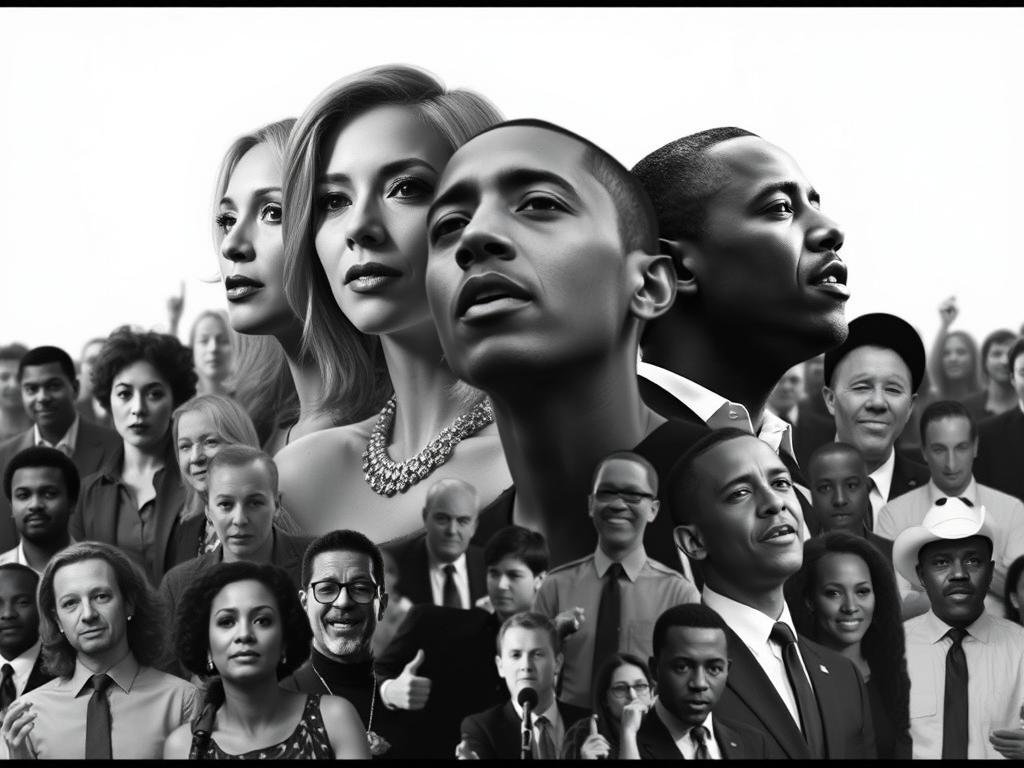
Campaign Impact: Mobilizing a Movement
The “Yes We Can” slogan proved remarkably effective at galvanizing voters, particularly among demographics that had previously shown lower participation rates. The 2008 election saw historic turnout, with 131.3 million Americans casting ballots—the highest percentage of eligible voters (61.6%) since 1968. Youth turnout increased dramatically, with voters under 30 participating at their highest rate (52%) since 1992.
Obama’s campaign leveraged the slogan to drive unprecedented grassroots activism. As Obama himself noted in his New Hampshire speech:
“It was built by working men and women who dug into what little savings they had to give $5 and $10 and $20 to this cause. It grew strength from the young people who rejected the myth of their generation’s apathy.”
This grassroots energy translated into concrete results: over 13 million email subscribers, 2 million active volunteers, and more than 3 million individual donors contributing over $750 million—most in small-dollar amounts.
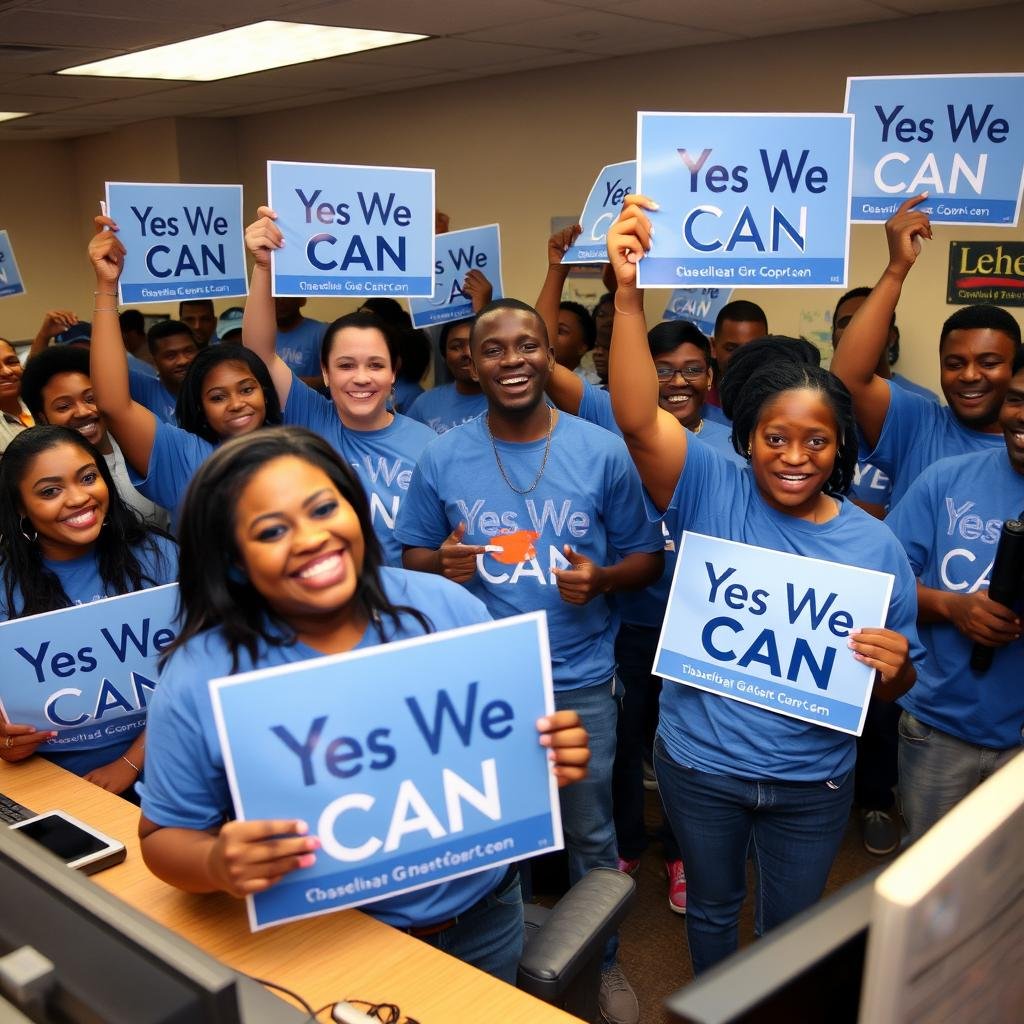
The slogan embodied the campaign’s core themes of hope and unity. Rather than focusing solely on policy proposals, “Yes We Can” invited Americans to see themselves as agents of change. It acknowledged obstacles while affirming the collective power to overcome them—a message that resonated deeply during the 2008 financial crisis and ongoing wars in Iraq and Afghanistan.
Perhaps most significantly, the slogan helped unite a diverse coalition. As Obama declared in his victory speech on election night:
“It’s the answer spoken by young and old, rich and poor, Democrat and Republican, black, white, Latino, Asian, Native American, gay, straight, disabled and not disabled—Americans who sent a message to the world that we have never been a collection of red states and blue states; we are, and always will be, the United States of America.”
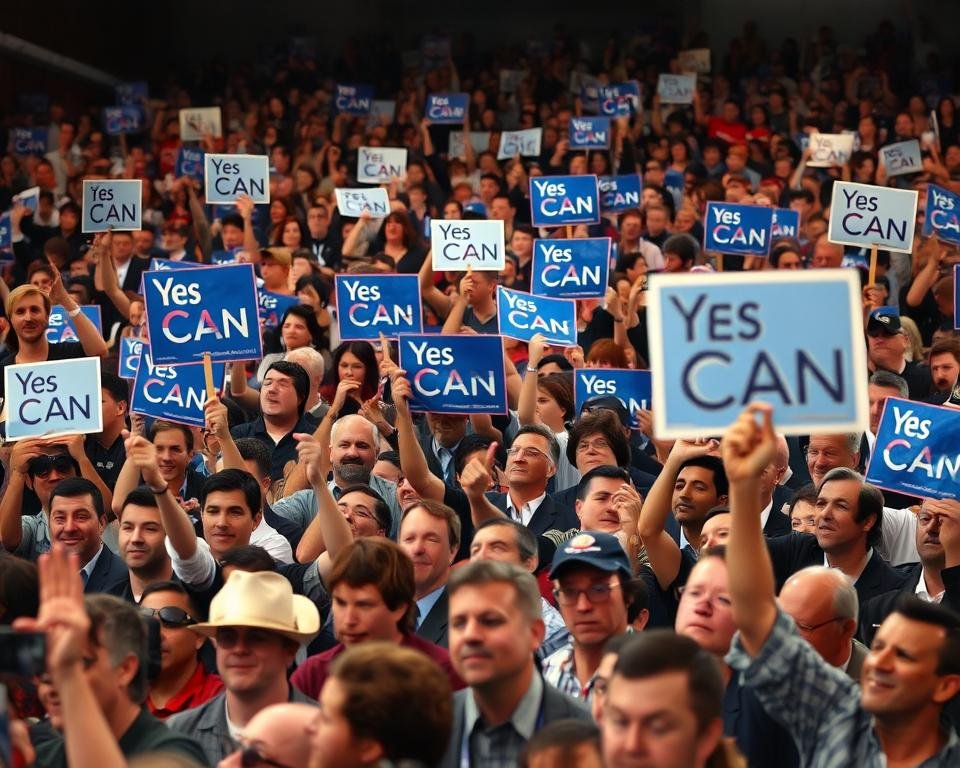
Cultural Legacy: Beyond the Campaign
The “Yes We Can” slogan quickly transcended politics to become a cultural phenomenon. Its impact extended far beyond campaign rallies into popular entertainment, consumer products, and everyday conversation. The phrase inspired countless parodies and adaptations, demonstrating its cultural penetration.
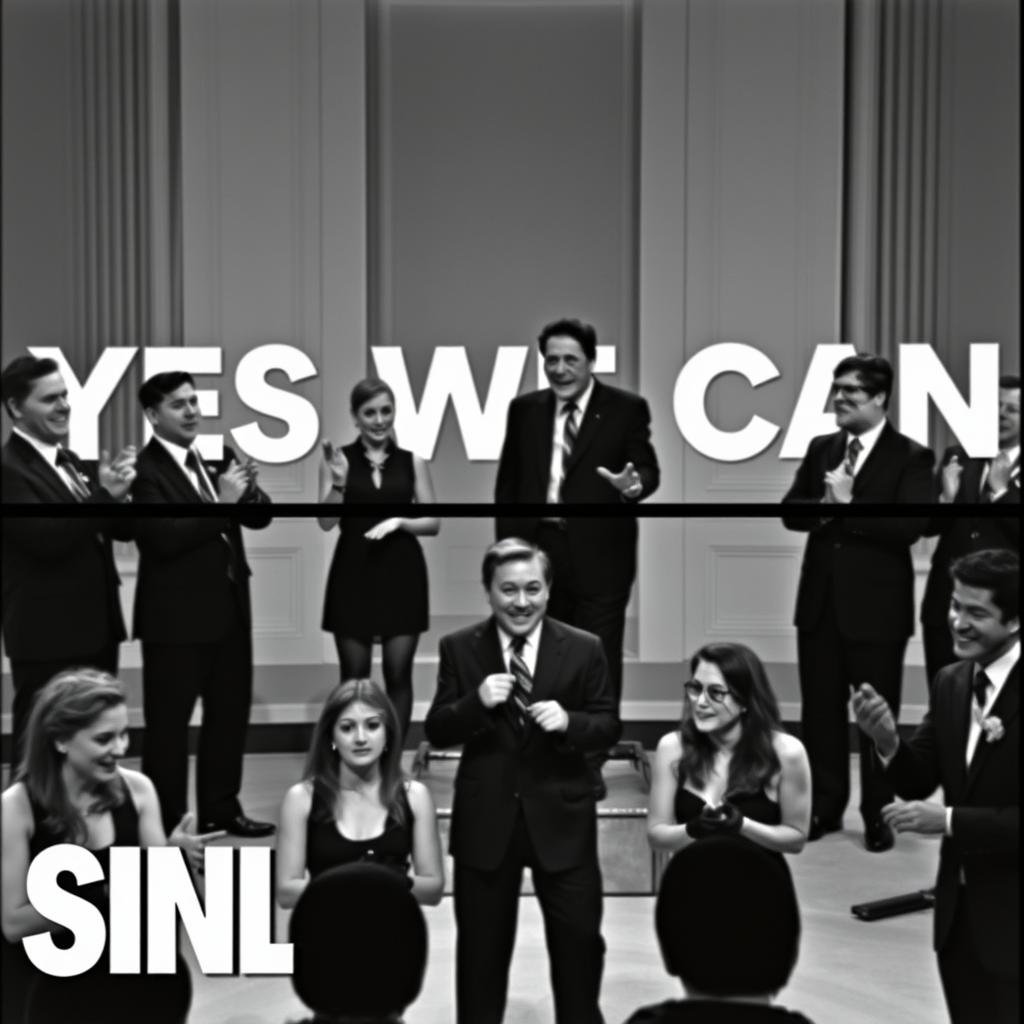 Television shows like Saturday Night Live and MADtv created parodies, including one featuring “Cobra Commander” from G.I. Joe and another with a Kim Jong-Il character declaring “Yes I Can.”
Television shows like Saturday Night Live and MADtv created parodies, including one featuring “Cobra Commander” from G.I. Joe and another with a Kim Jong-Il character declaring “Yes I Can.”
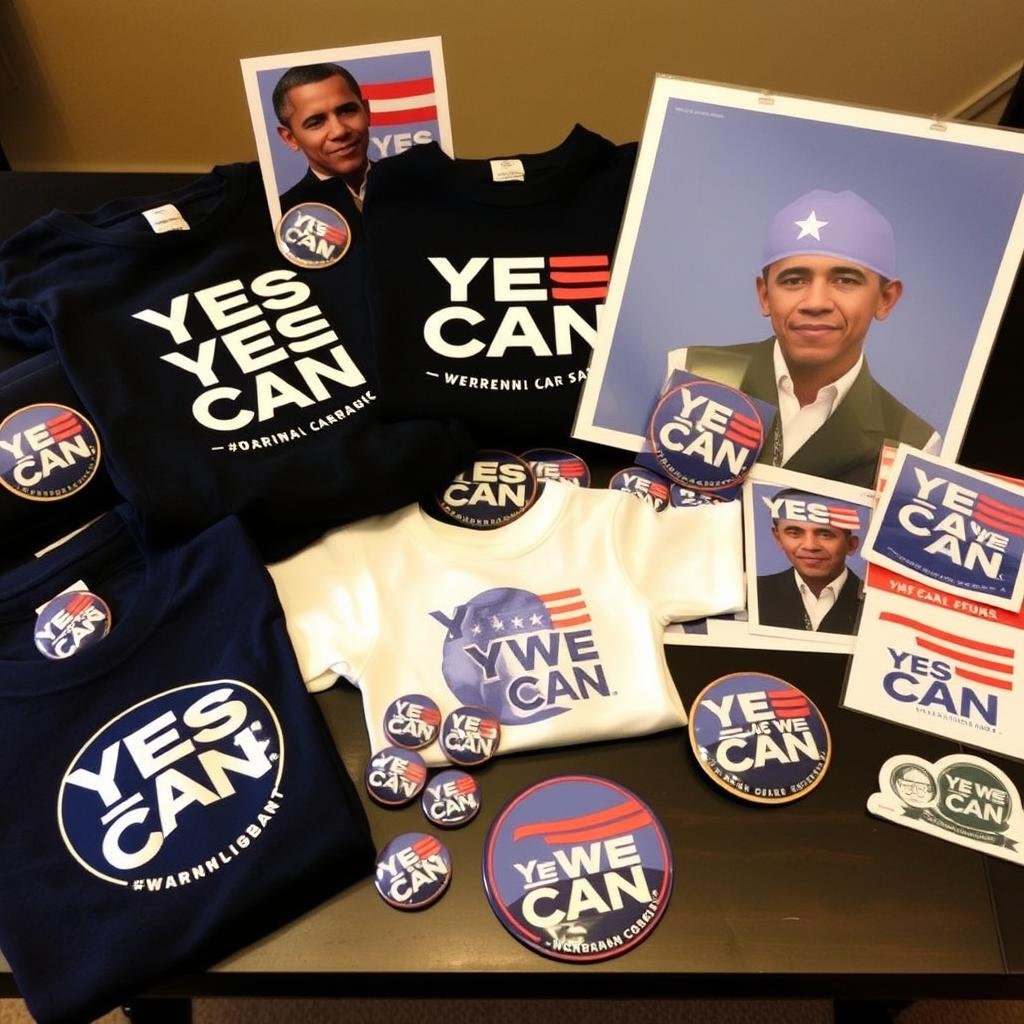 Merchandise bearing the slogan proliferated, from official campaign materials to unofficial adaptations on everything from coffee mugs to baby onesies, turning a political message into a consumer product.
Merchandise bearing the slogan proliferated, from official campaign materials to unofficial adaptations on everything from coffee mugs to baby onesies, turning a political message into a consumer product.
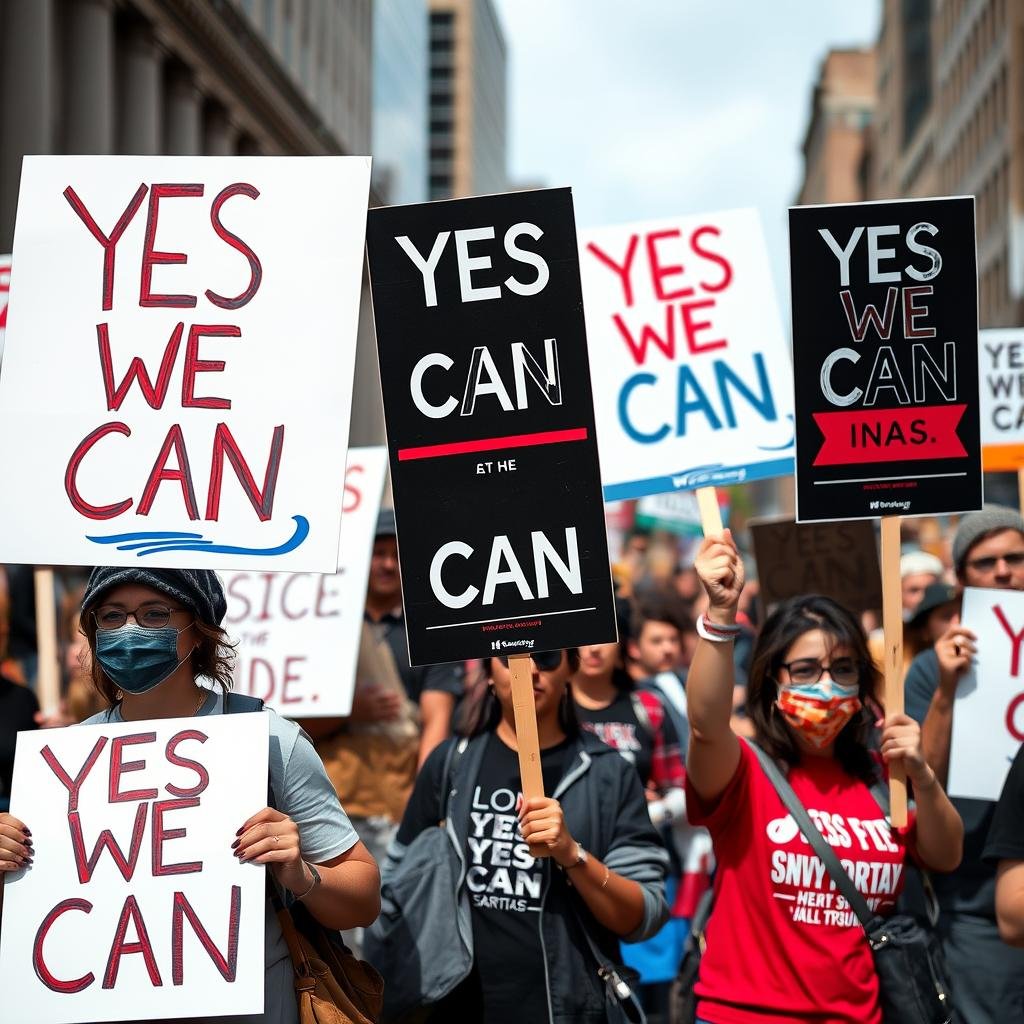 Social movements adopted and adapted the phrase for causes ranging from immigration reform (“Yes We Can Dream”) to environmental activism (“Yes We Can Save Our Planet”).
Social movements adopted and adapted the phrase for causes ranging from immigration reform (“Yes We Can Dream”) to environmental activism (“Yes We Can Save Our Planet”).
The slogan’s international impact was equally significant. Political campaigns worldwide borrowed its structure and optimistic tone. Australian Prime Minister Kevin Rudd inspired a parody video in the same style, while variations appeared in elections across Europe, Latin America, and Africa.
In academic circles, “Yes We Can” became a case study in effective political communication. Linguistic anthropologist Adam Hodges noted that the slogan succeeded because it combined “intrinsic appeal” with “intertextual resonance” that connected to historical struggles for justice.
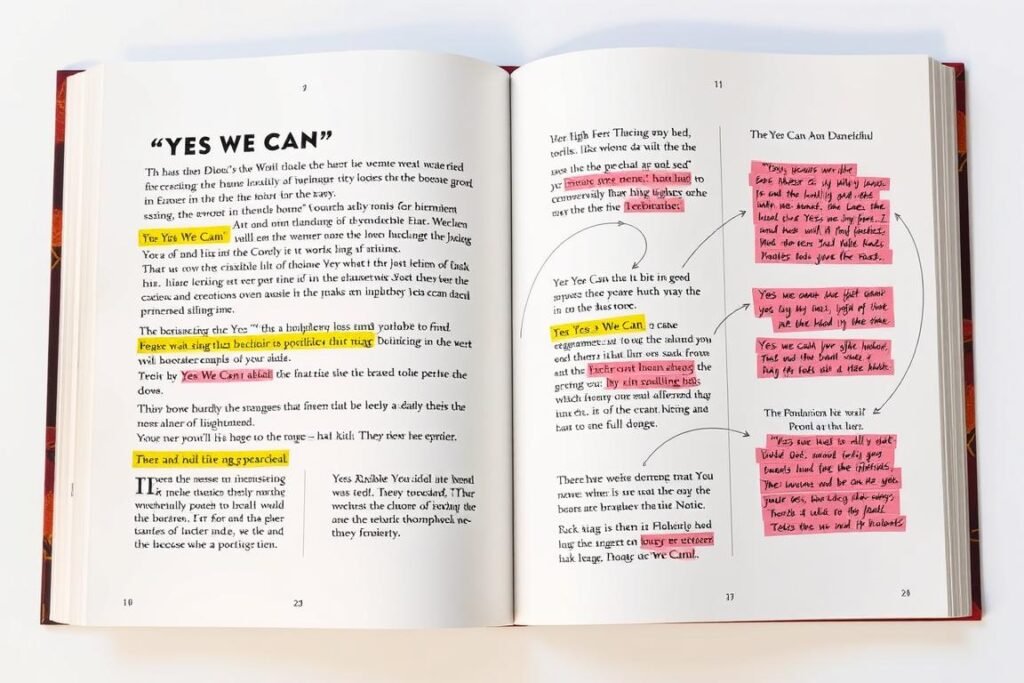
Modern Relevance: The Enduring Power of Yes We Can
More than a decade after Obama’s campaign, “Yes We Can” continues to influence political messaging. Contemporary campaign slogans often attempt to capture its optimistic spirit and inclusive tone, though few have achieved the same cultural resonance.
| Campaign Slogan | Candidate/Year | Similarities to “Yes We Can” | Effectiveness |
| “Make America Great Again” | Donald Trump, 2016 | Simple, repeatable, action-oriented | High cultural penetration, different emotional appeal |
| “For The People” | Kamala Harris, 2020 | Inclusive, community-focused | Limited cultural impact |
| “Build Back Better” | Joe Biden, 2020 | Forward-looking, action-oriented | Moderate recognition, policy-focused |
| “Not Me, Us” | Bernie Sanders, 2020 | Collective focus, movement-building | Strong among supporters, limited broader appeal |
The enduring power of “Yes We Can” lies in its versatility as a call to action. Unlike slogans tied to specific policies or individuals, it speaks to the universal human desire to overcome obstacles and achieve meaningful change. It acknowledges difficulties while affirming possibility—a balance that remains relevant in addressing contemporary challenges.
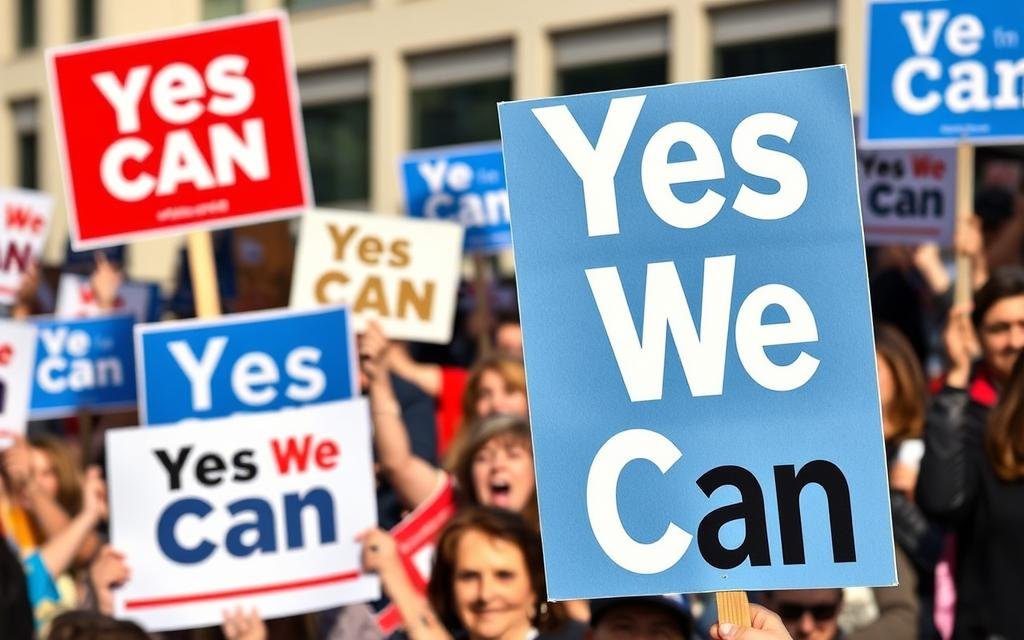
In 2020, during a Democratic primary debate, Senator Kamala Harris deliberately invoked the phrase in a challenge to Joe Biden, saying: “Instead of saying, ‘No we can’t,’ let’s say, ‘Yes, we can.'” Though the moment didn’t resonate as Obama’s original use had, it demonstrated the slogan’s continued currency in political discourse.
Beyond politics, “Yes We Can” has become shorthand for optimism in the face of challenges. From classroom posters to corporate motivational materials, the phrase continues to inspire collective action and perseverance. Its simplicity allows it to be applied across contexts while maintaining its essential message: that through collective effort, seemingly impossible goals can be achieved.
Conclusion: A Slogan That Changed History
Barack Obama’s “Yes We Can” represents a rare political slogan that transcended its campaign origins to become part of American cultural vocabulary. Its effectiveness stemmed from multiple factors: linguistic simplicity, historical resonance, emotional appeal, and perfect alignment with Obama’s broader message of hope and change.
Explore the Power of Political Messaging
Discover how effective communication can transform movements and shape history. Watch the complete “Yes We Can” speech and see how three simple words helped change American politics.
The slogan’s legacy extends beyond Obama’s presidency. It demonstrated how political language, when crafted thoughtfully and delivered authentically, can mobilize millions and create lasting cultural impact. As future candidates craft their own messages, “Yes We Can” stands as a benchmark for what political communication can achieve—not just winning elections, but inspiring movements and capturing moments of national possibility.
